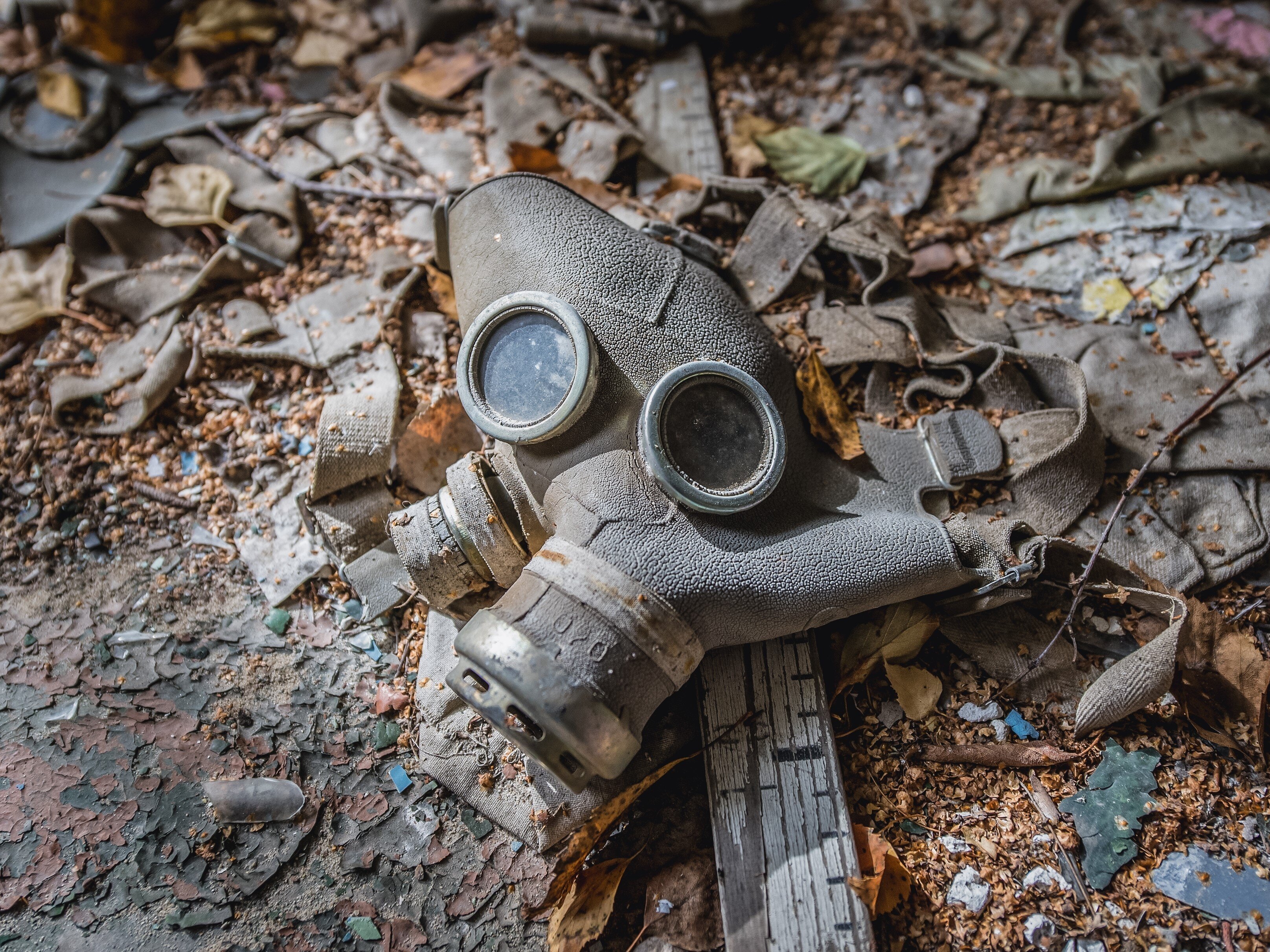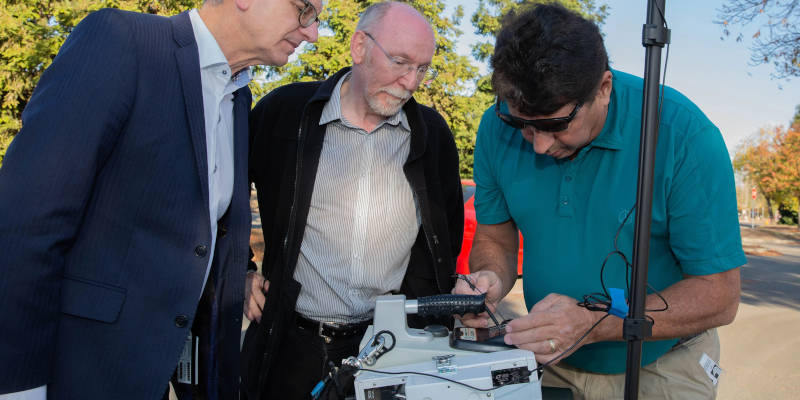Radiation Field Training Simulator
A revolutionary new training system that combines virtual and real world capabilities
Are You Ready?
Are your personnel adequately trained for the challenges of a radiological emergency, nuclear incident or act of WMD terrorism?
Any radiological incident that involves the presence of a high-radiation source or radioactive contamination has the potential to present a range of complex challenges for those tasked with CBRNe emergency response.
It is vital that responders are provided with training opportunities that robustly reflect real-life scenarios and include the hands-on use of actual operating equipment.

What is RaFTS?
The Radiation Field Training Simulator (RaFTS) is a revolutionary new training system that combines virtual and real world capabilities to help personnel prepare for acts of radiological incidents, disasters and terrorism and deal with the aftermath.
RaFTS represents a substantial leap in the delivery of radiological training by providing highly realistic training experience that recreates all of the realities of operating against a live radiation hazard and that uses actual detection equipment.
The technology enables instructors to stage complex virtual scenarios that can be played anywhere that the location can be tracked and with a signal-generation design that can potentially be applied to multiple instrument types (radiation, explosives, chemical etc.)
The RaFTS project combines Lawrence Livermore National Laboratory's (LLNL) considerable RaFTS and scenario-development expertise with Argon Electronics’ extensive training simulator capabilities and detector manufacturer relationships. It received Technology Commercialization Fund (TCF) funding in July 2019.
The RaFTS Lab team is led by Global Security N Program computer scientist Greg White, and LLNL nuclear chemist, Steven Kreek.

Prototype RaFTS NaI mobile monitoring training set up. © LLNL
How Does RaFTS Work?
The effectiveness of radiation detection training can frequently fall short due to the difficulties in yielding realistic configurations from small quantities of representative radiation sources.
Using RaFTS technology, it is possible to provide realistic radiation detection training that utilises actual operational equipment but without the need for a radiation source.
The RaFTS hardware is an externally mounted device that attaches directly to a radiological detection system and that then interfaces directly with that system’s circuitry to recreate all of the behaviour and physics of real-world usage.
.png?width=1033&height=559&name=RaFTS%20Ortec%20Detective%20HPGE%20Simulated%20and%20Real%20Specta%20(1).png)
Comparison of real and simulated 137Cs HPGE spectra. © LLNL
Output is of sufficient quality to ensure the detection instrument behaves exactly as it would against real radioactivity.
The data that is produced is also realistic enough to enable trainees to identify a radioactive source, measure its intensity and determine its location.
RaFTS offers an entirely new radiation training paradigm that aims to replace the use of individual simulators with a universal training solution that connects to real detectors.
In time, the technology can also be adapted beyond the scope of radiation detectors to include biological, explosive and chemical detector technologies.
Why Use RaFTS?
Many of the currently available radiological training methods are simply not up to the task when it comes to their ability to recreate the challenges and complexities of real-life radiological events involving multiple radionuclides.
While field exercises can appear to offer a high-fidelity training experience, they can also be expensive and impractical to carry out on a regular basis due to licensing and administrative restrictions associated with live radiological sources.
Training outcomes can also fall short due to the minimal quantity of radiation source that can be safely used and the fact that the simulators don’t always respond realistically or consistently. As a result, the essential physics can all too easily be diluted, misinterpreted or missed altogether.
Virtual reality (VR) training can offer an opportunity for trainees to experience a radiological incident by stepping inside a computerised model of the real world.
But VR immersion also has its limitations. It can often require the use of special equipment or the need to travel to specialized facilities. It is extremely difficult to replicate the physiological and sensory qualities of a real-world environment which means many of the logistical realities are lost. And perhaps most crucially of all, personnel are not able to practice their techniques using actual detectors.

RaFTS can support Rad Nuke response preparation exercises. © LLNL
Maintaining operational readiness is vital. The challenge however lies in providing personnel with the depth of practical radiological training that they need, in a manner that is safe, cost-effective and repeatable.
At the same time, the equipment that radiological responders are required to handle is becoming ever more sophisticated, particularly when it relates to search and radionuclide identification (spectrometry).
Ideally, what is required is a paradigm shift in the delivery of radiological preparedness training, where the benefits of virtual technology can be combined with the hands-on aspects of real-world capability.
Development of RaFTS
In 2019, the Lawrence Livermore National Laboratory (LLNL) and Argon Electronics secured a two-year, $2.55 million Cooperative Research Agreement (CRADA) to facilitate the development of an ultra-realistic radiation tool for first responders.
The development of RaFTS has been influenced by three guiding principles:
1. The importance of training using real equipment
It is vital that radiation detection equipment responds in a way that is consistent with the instrument type, the strength of the source, the distance from the source and the duration of time measured. Instruments should also provide consistent responses to the radiation sources across a variety of types - be they radiation dosimeters, survey instruments, aerial search, carborne search or in situ gamma.
2. The need to provide realistic training scenarios
Current training simulators are unable to adequately represent the most complex scenarios required for search and radionuclide identification. RaFTS draws upon scenarios created from internationally-recognised capabilities such as the US National Atmospheric Release Advisory Center (NARAC) and uses those scenarios to inject signals into operational spectrometers.
3. The benefits of recreating actual operational conditions
The distance between the source and the detector is crucial in determining how an individual instrument will respond. The data that is produced must also be consistent with factors such as time, distance and the type of detector being used.

Argon and LLNL review RaFTS HPGE field exercise performance. © LLNL
Become a RaFTS Partner
We are keen to hear from detector manufacturers who would like to partner with us as we move into the commercial phase of the revolutionary Radiation Field Training Simulator (RaFTS).
From Prototype to Commercialization
In 2016, LLNL demonstrated the RaFTS concept to the International Conference on Nuclear Security and Actions in Vienna Austria.
In the same year, the first-generation fieldable version of RaFTS was demonstrated with a high-purity germanium-based (HPGe) detector. HPGe was tackled first because it is one of the most challenging instruments to get right without risking degradation in the performance of the expensive detector system.

RaFTS Ortec Detective prototype. © LLNL
As the demonstration proved, the data produced is as real as it gets, with “real” and “virtual” being essentially indistinguishable.
All spectral features in the HPGe were maintained, including statistical randomness and shape, and the instrument responded to trainee control exactly as it does in real life.

RaFTS IAEA Demonstration. © LLNL
In a second phase of development in 2017, RaFTS was modernised and made functional on a more common detector type - a sodium iodide (NaI) scintillator.
.jpg?width=532&height=400&name=RaFTS%20NaI%20Prototype%20set%20up%20(2).jpg)
RaFTS NaI prototype setup. © LLNL
Nal is used in handheld radionuclide identifiers (RIIDs), in search equipment such as backpacks, vehicle based systems and aerial systems.
The image 1 provides a visual depiction of RaFTS Simulated NaI Weapons Grade Uranium Spectra.
In the image 2, RaFTS shows NCo60 source on a low-energy resolving detector (Nal).


Img.1 RaFTS Simulated NaI Weapons Grade Uranium Spectra. © LLN
Img. 2 RaFTS NaI Simulated Co60 spectra. © LLNL
RaFTS is currently the recipient of two US patents.
LLNL’s two-year partnership with DOE and Argon Electronics will provide an invaluable opportunity to develop, integrate and commercialize the RaFTS technology.
The RaFTS CRADA funding of about $2.55 million includes $750,000 that comes to LLNL from the TCF Grant. An estimated $1.8 million will be provided through in-kind contributions from the company.
“RaFTS will provide spectroscopic instrument users with an unprecedented and lifelike exercise capability substantially raising the bar on emergency response preparedness, ensuring responder training is maintained at the highest level and we are actively seeking detector manufacturers to join this collaborative effort to enhance radiation training.”
Steven Pike, Argon Electronics